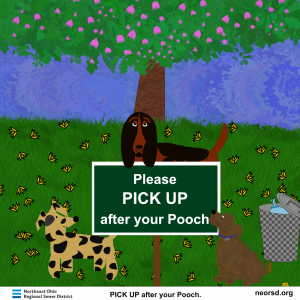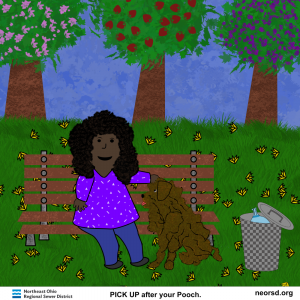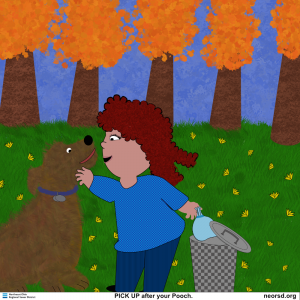You do not have to be a principal dancer, a Broadway star, or a Tik Tok influencer to enjoy dancing. Dance is for everybody!
Personal Benefits
I have enjoyed participating in dance and have seen many benefits throughout my life. It is an excellent form of exercise. Moving our bodies has significant health benefits, such as strength, cardiovascular health, and better balance.
Dancing is an expression of cultural heritage and tradition around the world. Dance ties us to the past and the future. It encompasses the blending of symbols and stories of people from many different origins. Much like the Macarena and the Electric Slide of the 1990s, it can be a social event that allows us to connect with others and form bonds. It allows one to feel the music and capture the essence of the notes. It fosters self-confidence and self-esteem. It is a moving meditation, bringing calmness and focus. It cultivates creativity. Dance is also beneficial to the mind. Steps can be learned, and choreography can be practiced by picturing the series of movements in your mind’s eye.
Dance Styles
There are many styles of dance to choose from. Some examples are ballet, character, ballroom, tap, jazz, modern, line dancing, square dancing, and hip-hop.
Ballet is a classical and technical style in which advanced ballet dancers wear pointe shoes and balance their entire body weight on their toes to appear weightless—something that I tried but did not master. I am grateful to have had the experience of practicing and performing ballet in pointe shoes because it gave me a first-hand appreciation for the art. Ballet tells a story. Well-known ballet productions include The Nutcracker, a Christmas ballet, and Sleeping Beauty, which shows good versus evil.[1]
Character dance is a specific type of classical dance made up of folk dances, primarily from European countries. My experience is that this type of dance, while done with a lifted and supported body, has footwork that is heavier on the floor, consisting of movements such as “heel then toe” and stomping.[2]
Ballroom dancing is done with partners and has many different styles, such as waltz, tango, foxtrot, and rumba. It is done socially and competitively. I have taken ballroom dance classes, and I found that this style provided unique opportunities to learn while connecting with a partner. Ballroom dance is very popular for weddings and is a fun activity. Studios such as the Arthur Murray International Dance Centers are great places to take lessons.

Tap is a style of dance where the metal taps on the dancers’ shoes strike in time with the music. The Radio City Rockettes is an example of an iconic American tap dance company. Irish stepdance is similar to tap, though it is performed with the arms straight at the sides in a rigid form. Jazz combines movements from sacred African dances (Gioube) and European-style clog dances from Scotland, Ireland, and England.[3] It is often featured in Broadway shows such as the musical Chicago. Modern dance is creative and expressive and includes body isolations as part of the movements.
Line dancing, though originating in Europe, is generally known as an American country-western style performed in social clubs. It consists of lines of people repeating a choreographed sequence of steps. Since one can mirror the dancers’ movements in the line in front of them if needed, it is an easier style to learn and perform. With similar origins to line dancing, a square dance consists of four couples arranged in a square and facing each other and a “caller” to direct their movements. It is very important in the United States due to its association with a western way of life despite originating in England.[4][5]
Hip-hop is a relatively new form of dance, originating in New York City in the 1970s. It is an improvisational and freestyle street dance. Hip-hop is intended to represent a way of life and is frequently performed to rap music.[6]

Every generation has its own influence on dance styles based on the social atmosphere and popular music of the time. Examples of these influences are the carefree dances of the 1920s, like the Charleston during the prohibition era, and the waltzes of the 1930s, where people sought to emulate the dancing of film stars like Ginger Rogers and Fred Astaire to escape the harsh life of the Great Depression. The 1940s brought the jitterbug and swing while the music industry slowed due to the conscription in World War II.[7] The 1950s and 1960s brought the birth of Bandstand and rock and roll as a reflection of youth rebellion with dances like the bop, twist, and mashed potato—many of these dances did not include a partner. With the 1970s came the bright and colorful disco era with dances like the hustle and the YMCA. In the 1980s, there was breakdancing and dances such as the moonwalk and the robot. The 1990s brought hip hop, line dancing, and moves like the running man and the hammer dance. Dances of the 2000s include twerking and other freestyle dances.[8]
With billions of people around the world sharing content on platforms like Tik Tok and Instagram, dance will surely continue to evolve, and the styles will be as limitless as the imaginations of individuals.
Places to Dance
Dancing can be experienced in many places. Recently, online videos and social media platforms have allowed people to dance for thousands of watchers. Other places to practice dancing in a more intimate setting are dance schools, clubs, gym classes, churches, and senior centers.
Societal Benefits
I have seen in recent years dance classes and performances that are inclusive of people with disabilities. This is a wonderful development and something the dance world, and the world at large, needs. All people, regardless of differences, can come together, learn to get along, help one another, and support each other in the learning of dance and in life. Dance, in many ways, can help us realize that we are more alike than we are different. We are all wonderfully unique, but at the same time, all human. We can learn self-acceptance. There is no need to be perfect; just to be the best version of yourself— on the dance floor and every day.
Life is short, and in a world filled with distractions, dance can allow us to live in the moment.
Read more art-related articles on Zealousness blog Arts – iN Education Inc. (ineducationonline.org).
Bibliography:
- “Ballet.” Wikipedia. Wikimedia Foundation, January 29, 2023. https://en.wikipedia.org/wiki/Ballet.
- “Character Dance.” Wikipedia.
- Frank, Rusty. “Tap Dance.” Encyclopædia Britannica. Encyclopædia Britannica, inc., February 18, 2016. https://www.britannica.com/art/tap-dance.
- “Line Dance.” Wikipedia.
- “Square Dance.” Wikipedia.
- McCollum, Sean. “Hip-Hop: A Culture of Vision and Voice.” The Kennedy Center, The Kennedy Center, 30 Oct. 2019, https://www.kennedy-center.org/education/resources-for-educators/classroom-resources/media-and-interactives/media/hip-hop/hip-hop-a-culture-of-vision-and-voice/.
- Heichelbech, Rose. “See Just How Much Dancing Has Changed Over the Past Century.” Dusty Old Thing, March 4, 2021. https://dustyoldthing.com/evolution-of-dance/.
- Palmer, Katie. “Sutori.” Dancing Through the Decades. Sutori. Accessed February 6, 2023. https://www.sutori.com/en/story/dancing-through-the-decades–qVK2JKNcw4Qj6Qv1us5cxNEr.






















